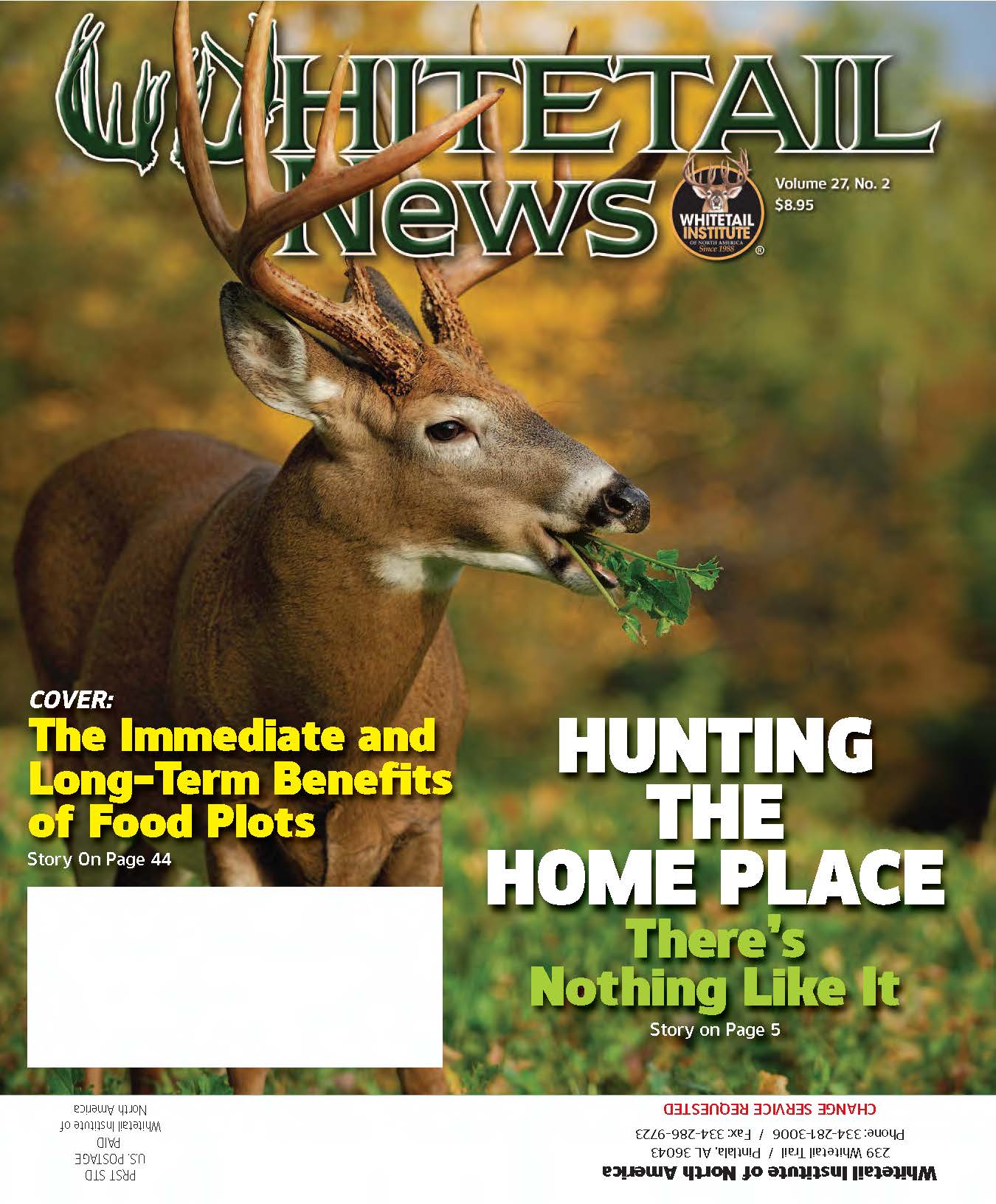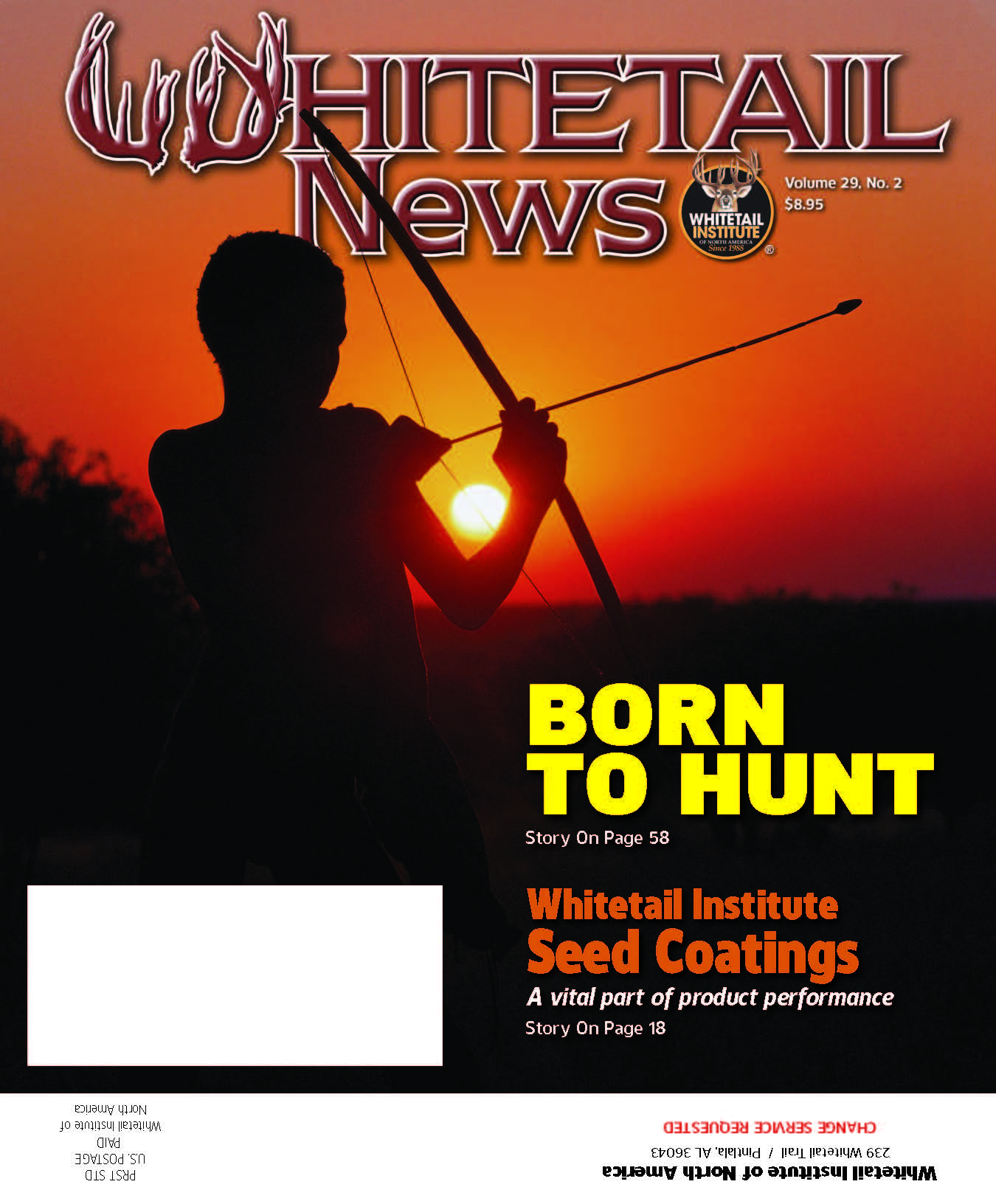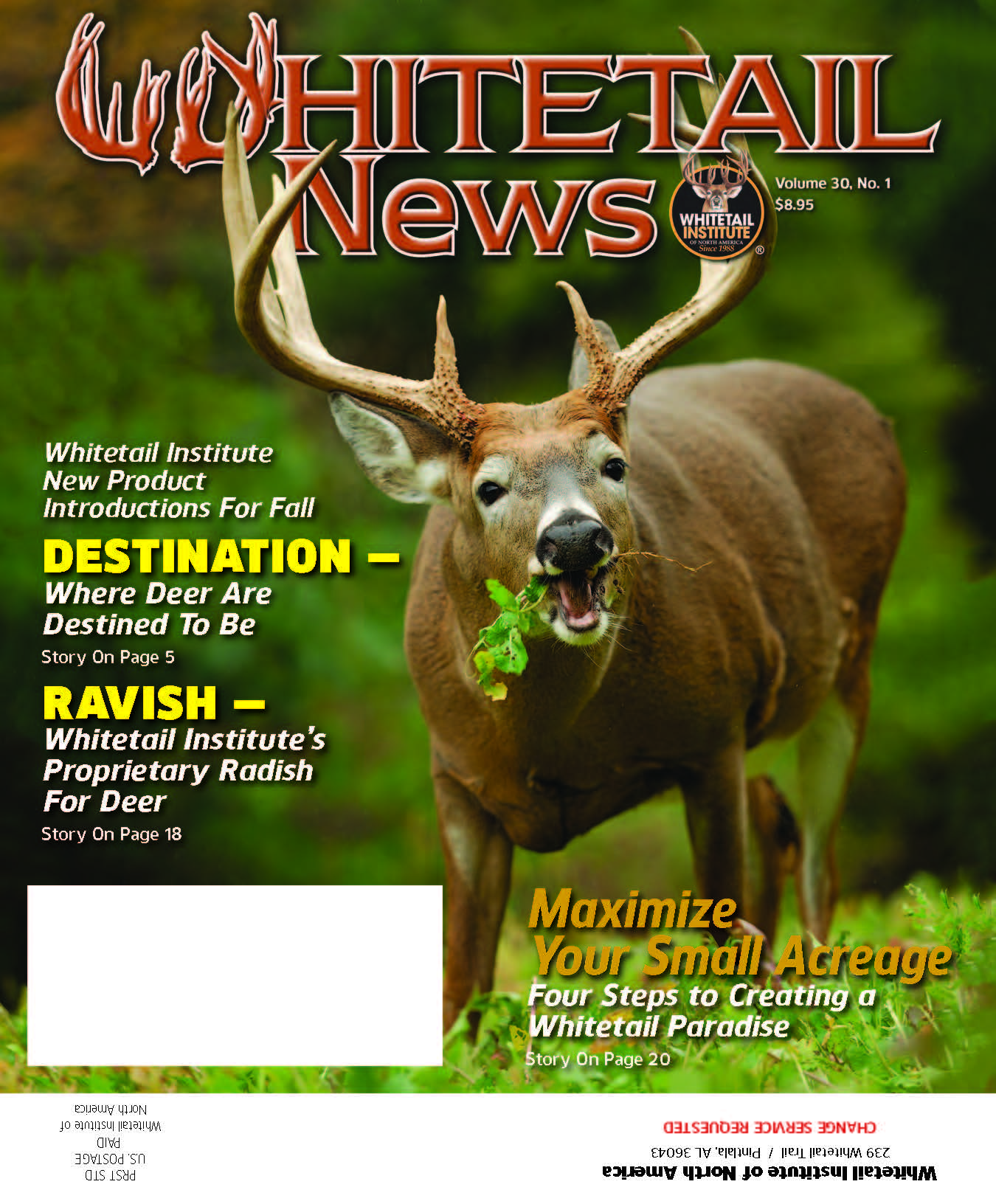When you think about managing land for wildlife, especially for deer, the name "Whitetail Institute" often pops right into the conversation. For many who spend time and effort making their property more inviting for these animals, figuring out what truly works on the ground is a big deal. People are always sharing what they've tried, what went well, and sometimes, what didn't quite hit the mark. It's a community where folks genuinely want to help each other succeed, sharing insights from their own patches of earth, so you know, you can learn from what others have already done.
There's a real buzz around how different products perform, and that's pretty natural when you're investing time, effort, and resources into creating a better habitat. Whether it's a specific seed mix or a way to keep unwanted plants from taking over, hearing directly from someone who has been there, done that, just feels right. It's about getting a sense of what to expect, perhaps before you even put a single seed in the soil. You want to feel confident in your choices, and that often comes from the shared experiences of others who are just as passionate about their land as you are, you know?
This whole effort is about creating places where deer want to spend their time, finding nourishment and feeling secure. From the very first steps of getting your soil ready to watching those plots grow, every stage has its own set of questions and possibilities. It's a continuous learning process, really, where each season brings new lessons and opportunities to fine-tune your approach. So, it's almost like a shared adventure, figuring out the best ways to nurture these spots for the deer you hope to see thrive.
- Emerald Loop Bar Grill Chicago
- Marcus Lincoln Grand Cinema
- One Green World
- Luke Bryans Sister
- Big Star Hyundai
Table of Contents
- What’s the Buzz About Whitetail Institute Edge?
- Keeping Whitetail Institute Clover Plots Clear-headed
- How Do You Prepare Your Whitetail Institute Plot?
- Whitetail Institute Soil Samples - A Foundation for Growth
- Are All Whitetail Institute Products a Sure Bet?
- The Whitetail Institute Brassica Experience - A Mixed Bag
- What About Whitetail Institute Alfa-Rack Plus Maintenance?
- Adding New Elements to Your Whitetail Institute Mixes
What’s the Buzz About Whitetail Institute Edge?
When folks talk about the "Whitetail Institute Edge," it really gets people curious about what kind of outcomes they might see. It’s a seed mix that many landowners consider putting in, and naturally, they want to hear from others who have already given it a go. Did it sprout up nicely? Did the deer actually use it as much as hoped? These are the kinds of questions that tend to pop up, because, you know, everyone wants their efforts to pay off. It’s all about whether those plants establish themselves well and then, perhaps more importantly, if they draw in the deer consistently. People are often looking for that firsthand account, the story from someone who has seen it through a full season or two. It's a bit like asking a friend for a recommendation, really, just to get a real feel for how it performs in various settings. So, hearing about the actual experiences, whether they were incredibly successful or perhaps just moderately so, helps others make their own choices, and that's pretty valuable information.
Keeping Whitetail Institute Clover Plots Clear-headed
Maintaining food plots, especially those filled with clover, is a pretty constant job. You might get to a point where you’re looking at your lush green clover, and then you notice some unwanted grass or other plants starting to make themselves at home. This can be a bit frustrating, as a matter of fact, because you want your clover to be the star of the show. So, the question of what to use to keep those plots clean and thriving often comes up. People have found that products like "Whitetail Institute Slay" and "Arrest Max" can be quite useful for this purpose. It’s about finding that right balance, making sure the good plants can really flourish without competition. The goal is to ensure that the deer have access to the best possible forage, without having to wade through a bunch of things they don't want to eat. It's a key part of keeping those plots productive and attractive throughout the growing season, and that’s a big part of successful food plotting, you know?
How Do You Prepare Your Whitetail Institute Plot?
Getting a food plot ready for planting is more than just scattering seeds; it really starts with understanding what your soil needs. It's a bit like preparing a good meal; you need the right ingredients for the best outcome. Many folks believe that taking "Whitetail Institute samples" of their soil is a crucial first step, and honestly, it makes a lot of sense. You send off a small amount of earth from your plot to a testing facility, perhaps to a place in Memphis, as some have done. Then, after a little while, you get back a detailed report. This report tells you exactly what nutrients your soil might be missing or what it has in abundance. It’s pretty helpful, actually, because it takes away the guesswork. Knowing what your soil truly needs means you can add just the right amount of lime or fertilizer, creating the perfect conditions for those seeds to really take root and grow strong. It’s a foundational step that can make a very big difference in the overall health and productivity of your plot, setting everything up for success right from the beginning.
- Aditi Mistry Nudes
- Kim Chius Upcoming Projects
- Maris Farms
- Michael Jackson Early Life
- Lussy Berry Real Name
Whitetail Institute Soil Samples - A Foundation for Growth
The process of sending in your "Whitetail Institute soil samples" is something many dedicated land managers do regularly, and for good reason. It's not just a suggestion; it's practically a standard practice for those serious about their food plots. You gather a few small scoops of soil from different spots within your planned planting area, mix them together to get a representative sample, and then off it goes to the lab. When the results come back, they offer a clear picture of your soil's current condition. They tell you about the pH level, which is super important for how plants absorb nutrients, and they also detail the levels of various essential elements like phosphorus and potassium. This information is incredibly valuable, providing a sort of roadmap for what amendments you need to add. Without this insight, you might be guessing, and that could lead to less than ideal growth or wasted effort. So, getting those reports back is really a moment of clarity, giving you the specific instructions you need to help your plants flourish, and that’s pretty cool, if you ask me.
Are All Whitetail Institute Products a Sure Bet?
When it comes to planting for wildlife, sometimes you try something with high hopes, and the results are not quite what you pictured. It's a common experience, honestly, because every piece of land is unique, and so are the conditions. Not every product is going to be a universal success story for everyone, and that's just the way it goes with farming or managing natural spaces. You might hear someone say that a particular seed mix, even from a well-known brand, didn't quite perform as they had anticipated. It doesn't mean the product is bad, necessarily, but rather that it might not have been the perfect fit for their specific soil, climate, or even the local animal population's preferences. It's a continuous process of trying things out, observing, and then adjusting your strategy for the next season. This willingness to experiment and learn from what happens is a big part of becoming a more effective land manager, you know, figuring out what truly thrives in your own particular environment.
The Whitetail Institute Brassica Experience - A Mixed Bag
One product that has, for some, yielded varied outcomes is the "Whitetail Institute Brassica" component found in their winter greens and other cold-season mixes. While some folks have seen deer absolutely devour these plots, others haven't had the same luck. It's a bit of a curious thing, really. You might plant it, watch it grow, and then find that the deer just aren't as interested as you'd hoped. This can be a little puzzling, especially when you've heard good things from other areas. Interestingly, while deer might not always take to the brassicas, some have observed that turkeys also don't seem to favor them much. It highlights that what works wonders in one location might not have the same effect in another, or that different animals have different tastes. It’s a good reminder that local conditions, deer pressure, and even the availability of other natural food sources can play a big role in how well a particular planting performs. So, it's almost like a trial-and-error process, seeing what your local wildlife truly prefers.
What About Whitetail Institute Alfa-Rack Plus Maintenance?
Planting a mix like "Whitetail Institute Alfa-Rack Plus" is often done with the idea of providing a long-lasting food source. However, even the best initial planting needs some ongoing care to truly shine. For instance, after a while, you might notice that grass starts to creep into your beautiful alfalfa and clover plot. This can be a bit of a nuisance, as the grass competes with the desirable plants for nutrients and sunlight. So, the question of how to keep that grass under control becomes pretty important. Many people turn to the maintenance guidelines provided for Alfa-Rack Plus, which often suggest using a specific herbicide, like Arrest herbicide, to manage these unwanted invaders. It’s about protecting your investment and ensuring that the plot remains productive and appealing to deer. Proper maintenance, including targeted spraying, helps to extend the life of the plot and keeps it as effective as possible for attracting and nourishing wildlife. It’s a key part of making sure your efforts continue to yield positive results over time, and that’s a pretty smart way to go about it.
Adding New Elements to Your Whitetail Institute Mixes
Sometimes, after you've got your main food plots going, you start thinking about adding something a little different, just to see how it might improve things. For example, some people consider putting "small burnett" into their clover and chicory plots. It’s a natural curiosity, wondering if a new component could make the mix even more appealing or provide additional benefits. You might hear that small burnett is a primary seed in a product like the "Whitetail Institute Imperial Extreme mix," which sort of tells you it’s a valued ingredient. It’s about experimenting, really, trying to fine-tune your food plots to make them the absolute best they can be for the deer. This kind of thoughtful addition shows a real dedication to providing a diverse and rich food source. It also highlights how people are always learning and trying new things, which is a really cool aspect of managing land for wildlife, you know, constantly seeking out ways to improve.
It's also pretty common to hear about individuals who are deeply connected with the folks at "Whitetail Institute." Someone might know the "Whitetail Institute guys" very well, perhaps even having been invited to visit their test farm, which is located just outside of Paris, Tennessee. This kind of firsthand experience, seeing how things are developed and tested, offers a unique perspective. It’s a chance to learn directly from the source, to see the science and effort that goes into creating these products. These visits, perhaps a few years back, can really solidify your trust in a brand and give you a deeper appreciation for the work involved. It’s a bit like getting an inside look at how things are done, which is always fascinating, and it helps to build a real sense of connection to the people behind the products you use.
Looking ahead, many people are always planning their next planting. You might hear someone say they are considering putting in "Buck Forage Oats" alongside "Imperial Whitetail Clover" to see how that combination works out. It's about trying different strategies, mixing and matching to find what truly thrives in their specific environment and what the local deer seem to prefer. There's also the question of whether these mixes, like the ones from Whitetail Institute, will grow well in less ideal spots, such as in the woods or in a smaller, more isolated plot. People are often curious if these products can still produce good results even when they're not in a wide-open, sunny field. And for those who are just getting started with spring plots for the very first time, there's a lot of excitement. You hear many people saying that "this stuff is awesome," which creates a real sense of optimism and encouragement for newcomers. It’s a wonderful feeling, knowing that you’re about to embark on a new season of growing, hoping to create something truly special for the wildlife.
This article has explored various real-world experiences and questions related to "Whitetail Institute" products and practices. We started by discussing the general interest and results people have seen with products like "Whitetail Institute Edge." We then moved into the practicalities of maintaining plots, specifically focusing on how to keep "Whitetail Institute clover plots" clear of unwanted growth, mentioning herbicides like Slay and Arrest Max. A significant part of successful food plotting, as discussed, involves proper preparation, which includes sending in "Whitetail Institute soil samples" to understand soil needs. We also looked at the varied outcomes some have experienced with "Whitetail Institute Brassica" in winter mixes, highlighting that not every product works identically for everyone or every animal. Furthermore, the article touched upon the ongoing care for plots, such as "Whitetail Institute Alfa-Rack Plus maintenance" and the use of Arrest herbicide for grass control. Finally, we considered the addition of new elements like small burnett, found in "Whitetail Institute Imperial Extreme," and the value of connections to the "Whitetail Institute" test farm, along with future planting plans involving "Imperial Whitetail Clover" and the general enthusiasm for first-time spring plots.
Related Resources:



Detail Author:
- Name : Dr. Stephan Durgan
- Username : angelica.sipes
- Email : rey.kuhn@gmail.com
- Birthdate : 1996-05-20
- Address : 36161 Melody Corner Apt. 852 Abdielborough, SC 16825-2447
- Phone : +1-281-209-0913
- Company : Bergstrom Ltd
- Job : Decorator
- Bio : Maxime tempora laudantium modi voluptas necessitatibus consequatur rerum est. Odit ut animi in autem incidunt. Eos itaque quis dignissimos iusto officiis ullam quo. Quae rerum omnis nihil totam ut.
Socials
tiktok:
- url : https://tiktok.com/@vreichert
- username : vreichert
- bio : Aliquam error sed nemo suscipit.
- followers : 549
- following : 1971
instagram:
- url : https://instagram.com/vreichert
- username : vreichert
- bio : Consequatur esse ut et doloribus sunt. Velit quo eveniet eius officiis et.
- followers : 4583
- following : 1628
twitter:
- url : https://twitter.com/viviannereichert
- username : viviannereichert
- bio : Consectetur ratione vitae sint ut nulla nostrum. Praesentium doloremque saepe et harum est. Magnam consectetur minus aperiam doloremque quibusdam.
- followers : 1620
- following : 1141
facebook:
- url : https://facebook.com/reichertv
- username : reichertv
- bio : Voluptas quam ipsa omnis nemo nihil non.
- followers : 4573
- following : 1387
linkedin:
- url : https://linkedin.com/in/vivianne.reichert
- username : vivianne.reichert
- bio : Consequatur non aspernatur aut nulla.
- followers : 1761
- following : 2534